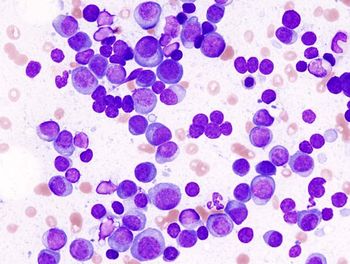
AI-Based Model May Guide Decision-Making in Kidney Cancer Based on CT, EGFR
Data demonstrate the feasibility of automated glomerular filtration rate prediction to decide between partial nephrectomy and radical nephrectomy in kidney cancer, according to an expert from the Cleveland Clinic.
An artificial intelligence (AI)–based model was able to successfully predict post-operative glomerular filtration rates (GFR) in patients with kidney cancer in ways that clinicians may not be able to; it may also be easily implemented into the treatment landscape, according to Nour Abdallah, MD.
At the
In study presented in a poster session at the symposium, Abdallah and her colleagues compared the AI and clinical model GFR estimations vs measured postoperative GFR based on correlation coefficients. When comparing the measured postoperative GFR, the correlation coefficient was 0.75 for the AI model and 0.77 for the clinical model, respectively. Additionally, the AI and clinical models performed similarly when predicting postoperative GFR below 45 ml/min/1.73m2 (Area under the curve, 0.89 and 0.9, respectively).
Based on the data, Abdallah stated that oncologists could potentially use these AI models for treatment decision-making without the need for additional clinical details or clinician involvement.
Transcript:
This model that we developed was able to behave as accurately as clinical models that were previously validated, whether to predict the post-operative EGFR in value or to predict the cutoff value which was 45.
We feel that this AI model would benefit the patients in a way that does not need any clinician time. It doesn't need any clinical details. It just needs the pre-operative EGFR value and the CT scan. We feel that it can be easily implemented in the health care system at the point of care to help the physician guide the patient towards the best surgery type for [them].
Reference
Abdallah N, Benidir T, Heller N, et al. Accuracy of fully automated, AI-generated models compared with validated clinical model to predict post-operative glomerular filtration rate after renal surgery. J Clin Oncol. 2023;41(suppl 6):693. doi:10.1200/JCO.2023.41.6_suppl.693
Newsletter
Stay up to date on recent advances in the multidisciplinary approach to cancer.

















































































